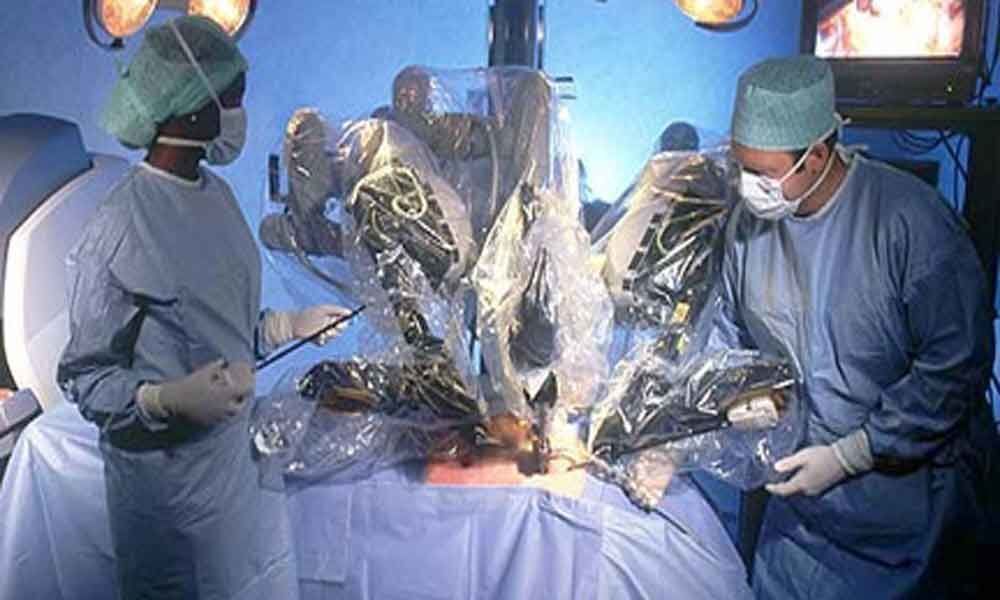Transforming Indian healthcare industry

The healthcare industry is one of the expanding sectors in India. This segment is subdivided into two sections which are pathology and radiology, Pathologists in clinical laboratories practice as consultant physicians to analyze the reports for the better diagnosis and treatment of a disease.
The healthcare industry is one of the expanding sectors in India. This segment is subdivided into two sections which are pathology and radiology, Pathologists in clinical laboratories practice as consultant physicians to analyze the reports for the better diagnosis and treatment of a disease. Radiology is concerned with diagnosing an injury with imaging techniques like MRI, CT Scans, CT scans, etc.
In the current situation, healthcare is driven by digital technology with most medical equipment running on websites, mobile applications and other digital platforms. With more private players coming forward with better public – private partnerships, this field is estimated to grow with annual growth of 25% during this 5 year tenure to become much more diverse and vast.
Some of innovations in diagnostics 3D Printing
The increased use of 3D printing technology has also evolved in the recent years, providing the surgeons with a game changing technology in diagnostics and study the human anatomy. The ultimate aim of 3D printing is to create organ replacements for the patients.
Mostly doctors suggest this technique as it is very cost effective and saves lot of time at the time of surgery, and results founded are far better. The cost depends on the material used for printing, but it is cost efficient than other methods of treatment.
As it is only a prototype model which is used for diagnostic purpose, cheapest material can be used to print the model and hence the cost is low. Prior to 3D printing, CT Scans, X-rays on plates were used which only Portrayed 2-D model.
India is at par with rest of the world in terms of medical advancements. This technique is still going to develop in the country. 20 cases per year ended up using 3D printing in world and same in India.
Robotic O Arm
Robotic O Arm System is an imaging system which is designed to meet the workflow demands of surgical environment. It is used for various purposes like spine, cranial and orthopaedics. The most advanced for robotic guidance is for spinal surgeries. This involves an imaging system which acts a GPS for the surgeon during surgery for accuracy and precision. O arm is known as 360 degree Robotic arm.
It is the latest advancement in the healthcare sector. With the introduction of o arm, there is no need to transport the patients for various tests like MRI, CT scan. O -Arm is a boon for the surgeons to plan, implement and they confirm the success of the surgery as soon as the patient even leaves the operating room. Without hindering the safety, this visioning system helps the surgeons in the procedure with better exactness, lowering the risks and other complication.
In India robotic technology is widely accepted as it is cost effective and time saving method to perform robotic surgeries. This technology is going develop in the country. Many doctors are unaware about it but very soon will come across and improve.
Data Integration
In recent years, the diagnostic has got a boom that changed the entire complexion of the industry drastically. To meet the expectations, various laboratories as LIS (Laboratory information system) and as well as medical analytical devices with more sophisticated and accurate data management, These medical devices can easily integrate with LIS to manage a huge bulk of data starting from initial ordering, to the reports of the testing and results to the clinical staff. Data management can phases can improve the quality and cost of healthcare. Hospitals and other medical sectors have lot of data to store and compile. With the introduction of analytics and software, it became easy for the patients to get their reports and data comfortably.
Genetic Testing
Genetic Testing is known as DNA Testing is a medical test which helps in identifying genes, chromosomes or proteins conditions. The negative result of the test is a big relief for the patients. This test helps in suspecting a genetic condition or helps in determine person chances of getting a genetic disorder. With the availability of new genetic screening, most of the parents are helped in identifying abnormal conditions at an early stage before it get worsened with time.
This is designed to find new information on genes or genetics and to learn about new disorders in term how much it can affect an individual or a family unit. genetic testing is primarily carried out as a clinical diagnosis, but the added benefit includes prognosis and identifying the gene carrier.
In healthcare, the promises are way more grander. The future of genetic testing may include editing genes to make a new ones out of them. The global predictive genetic testing and consumer genomics market is expected to grow around 2.6 billion by 2025. In India genetic testing is done with a purpose, it is done when people are not getting adequate results.
Molecular Biology
Molecular biology is the application of molecular approaches i.e. DNA and RNA. It is done to understand the functioning of protein and regulation in normal and abnormal cellular responses. The application of principles of molecular biology is to treat a disease or modify organisms for the commercial use which is known as genetic engineering. Now DNA can be isolated and sequenced easily and routinely.
The advancement in molecular biology directly impacts the clinicians in the better diagnosis and treatment of diseases. With these advances, clinicians can easily identify patients preoperatively with specific diseases like Alzheimer's disease or identify a specific virus or bacteria in intensive care unit.
The new diagnostic in medical framework has paved a gateway for testing and research work which are more correct, cost effective, more reliable. This includes add on test, replacing an existing test, after the current diagnostic of the patient. The new role of diagnostic services helps in resource utilization and identifying the areas which requires disinvestment.
(Writer is CEO & founder of 3Hcare.in)
By CA Ruchi Gupta


















